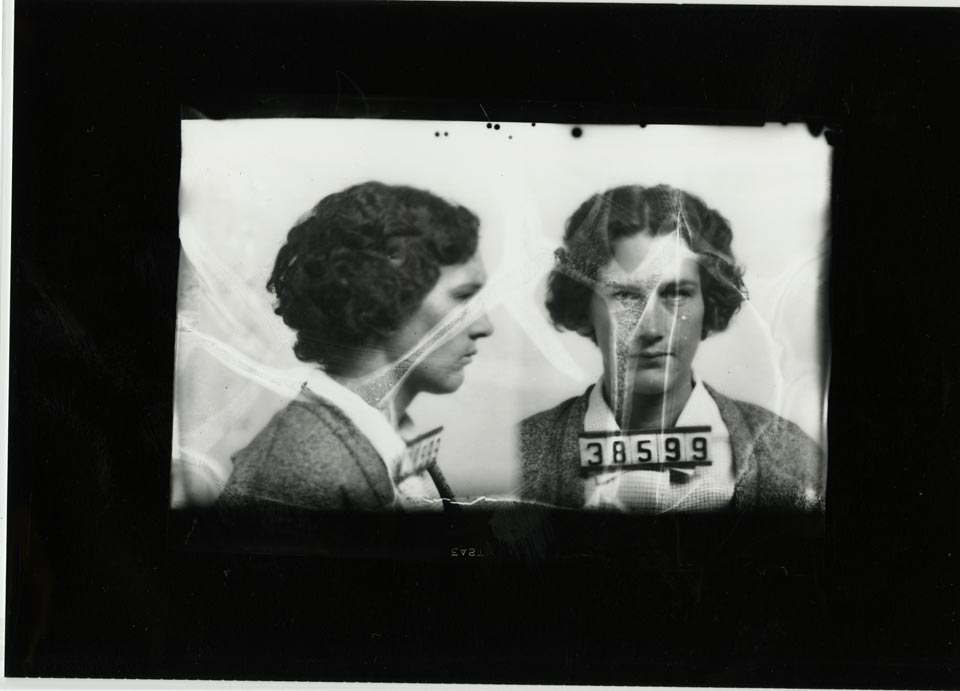Welcome to Mug Shot Monday! This is the first in a series of new weekly posts highlighting inmate mug shots in the records of the Virginia Penitentiary. This series will include inmate photographs of the famous (or infamous), photographs that document the aging process of long-term prisoners, and any other photographs that I found interesting while I processed the collection. Each Mug Shot Monday entry will include the prisoner’s mug shot, prisoner register entry and a brief overview of their case. It is not meant to be a definitive history. The intention is to highlight the collection and encourage additional scholarship.

Photograph of Edith Maxwell, #38599
Records of the Virginia Penitentiary, Series II. Prisoner Records, Subseries B. Photographs, Box 32, Accession 41558, State Records Collection, Library of Virginia.
The Virginia Penitentiary began photographing new and existing inmates sometime in 1906. The collection contains approximately 50,000 prisoner images (negatives and/or prints) from 1906-1914, 1934-1961, and 1965-1966. The mug shots also reflect the changes in photography. The Penitentiary used three different types of negatives: glass plate, 1906-1914; nitrate, 1914-1934; and acetate, 1934-1960s. Nitrate negatives are very flammable; only about 100 nitrate negatives from 1914 have survived. Acetate or safety film can degrade overtime producing a strong vinegar odor; channels form between the base of the negative and emulsion as it deteriorates.
Most of the inmate negatives from the 1930s to early 1940s show evidence of deterioration. The remainder of the collection is in stable condition.
Edith Maxwell, a 21-year old teacher, was convicted in November 1935 of murdering her father. The Maxwell murder case became a national media sensation with stories appearing in newspapers across the country. Maxwell was pardoned by Governor James Price in 1941. Edith Maxwell has been the subject of recent scholarship and was included as one of the women featured in the Library of Virginia’s 2004 exhibition, Working Out Her Destiny: Women’s History in Virginia, 1600-2004 and the focus of Sharon Hatfield’s 2005 book, Never Seen the Moon: The Trials of Edith Maxwell.







